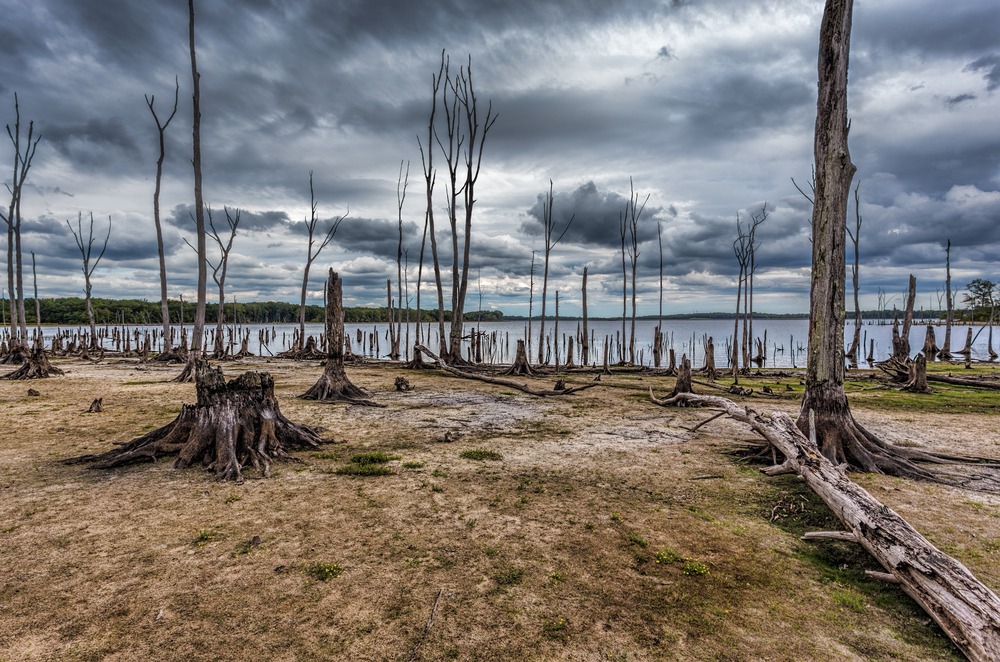By Mario Molina, Veerabhadran Ramanathan, Durwood J. Zaelke, October 9, 2018

Image courtesy of Shutterstock
The UN’s Intergovernmental Panel on Climate Change’s Special Report on Global Warming of 1.5 degrees Celsius, released on Monday, is a major advance over previous efforts to alert world leaders and citizens to the growing climate risk. But the report, dire as it is, misses a key point: Self-reinforcing feedbacks and tipping points—the wildcards of the climate system—could cause the climate to destabilize even further. The report also fails to discuss the five percent risk that even existing levels of climate pollution, if continued unchecked, could lead to runaway warming—the so-called “fat tail” risk. These omissions may mislead world leaders into thinking they have more time to address the climate crisis, when in fact immediate actions are needed. To put it bluntly, there is a significant risk of self-reinforcing climate feedback loops pushing the planet into chaos beyond human control.
The report does describe how much more serious climatic impacts will be if the world lets warming reach 2 degrees Celsius above pre-industrial levels. Limiting the warming to 1.5 degrees Celsius can, for example, cut many impacts in half, including those of fresh water shortage and losses of many species and of ocean fish catch. The report is relatively optimistic that this can be done, but only with unprecedented commitment and cooperation from governments, industry, religious and secular leaders, and citizens around the world.
So far, average temperatures have risen by one degree Celsius. Adding 50 percent more warming to reach 1.5 degrees won’t simply increase impacts by the same percentage—bad as that would be. Instead, it risks setting up feedbacks that could fall like dangerous dominos, fundamentally destabilizing the planet. This is analyzed in a recent study showing that the window to prevent runaway climate change and a “hot house” super-heated planet is closing much faster than previously understood.
These cascading feedbacks include the loss of the Arctic’s sea ice, which could disappear entirely in summer in the next 15 years. The ice serves as a shield, reflecting heat back into the atmosphere, but is increasingly being melted into water that absorbs heat instead. Losing the ice would tremendously increase the Arctic’s warming, which is already at least twice the global average rate. This, in turn, would accelerate the collapse of permafrost, releasing its ancient stores of methane, a super climate pollutant 30 times more potent in causing warming than carbon dioxide.
By largely ignoring such feedbacks, the IPCC report fails to adequately warn leaders about the cluster of six similar climate tipping points that could be crossed between today’s temperature and an increase to 1.5 degrees—let alone nearly another dozen tipping points between 1.5 and 2 degrees. These wildcards could very likely push the climate system beyond human ability to control. As the UN Secretary General reminded world leaders last month, “We face an existential threat. Climate change is moving faster than we are.… If we do not change course by 2020, we risk missing the point where we can avoid runaway climate change, with disastrous consequences….”
The IPCC report makes clear for the first time that limiting warming to 1.5 degrees requires cutting short-lived super climate pollutions—black carbon, methane, and hydrofluorocarbons—along with carbon dioxide, as well as learning how to pull carbon dioxide out of the atmosphere at scale.
The report notes that there are historic precedents for the speed we need, although not for the scale of required mitigation. But the United States’ World War II industrial mobilization provides an encouraging precedent: Only three-and-a-half years elapsed between Pearl Harbor and D-Day. Our economies have a remarkable ability to adapt quickly with the right policies. So neither fatalism nor despair are warranted, but rather a sense of urgent, or even running-scared, optimism.
Governor Jerry Brown’s Global Climate Action Summit in San Francisco last month teamed up with technology innovators, zero-carbon energy producers, entrepreneurs, and other optimists to seize this challenge. President Macron’s One Planet Summit followed in New York during Climate Week, bringing together leaders of finance who were optimistic that managing climate risk is not only possible, but an exciting challenge that would also be profitable as new industries arise to do the most important work the world has ever demanded. (One estimate of the cost of carbon dioxide removal is a staggering $89 to $535 trillion this century—a sizable new market.)
It is critical that world leaders understand the IPCC report and use it as a template for immediate action. While its approaches have been identified before—including last year’s Well Under 2C study that we co-chaired with over 30 experts—the IPCC report should be a rallying point for nations to implement the policies needed to limit global warming to no more than 1.5 degrees Celsius.
Climate change should not be a divisive political issue. It is an issue of fundamental, data-driven science, an issue of human tragedy, and an issue of planetary ecosystems in peril. But above all, it is an issue we can still do something about.
Changing course will take leadership, such as we have seen in the United States from Governor Brown and the cities and states in his coalition, and from key heads of state such as China’s President Xi and India’s Prime Minister Modi, as well as France’s President Macron. These three leaders have the potential to provide Churchillian leadership to stabilize the world’s climate, starting by rallying the G20 countries responsible for 80 percent of the problem. They’ll need to speed up, and scale up, to succeed.











Đăng nhận xét